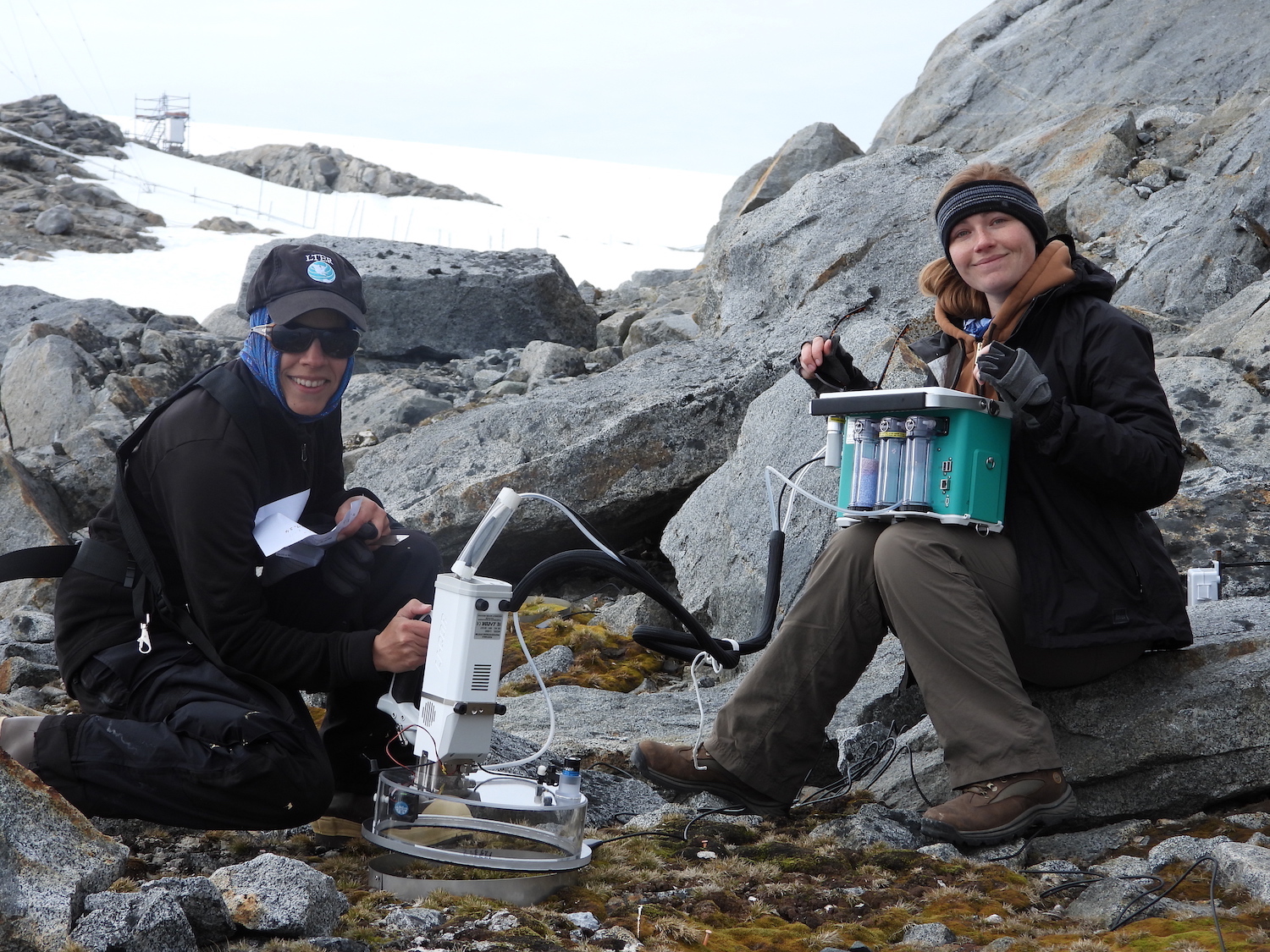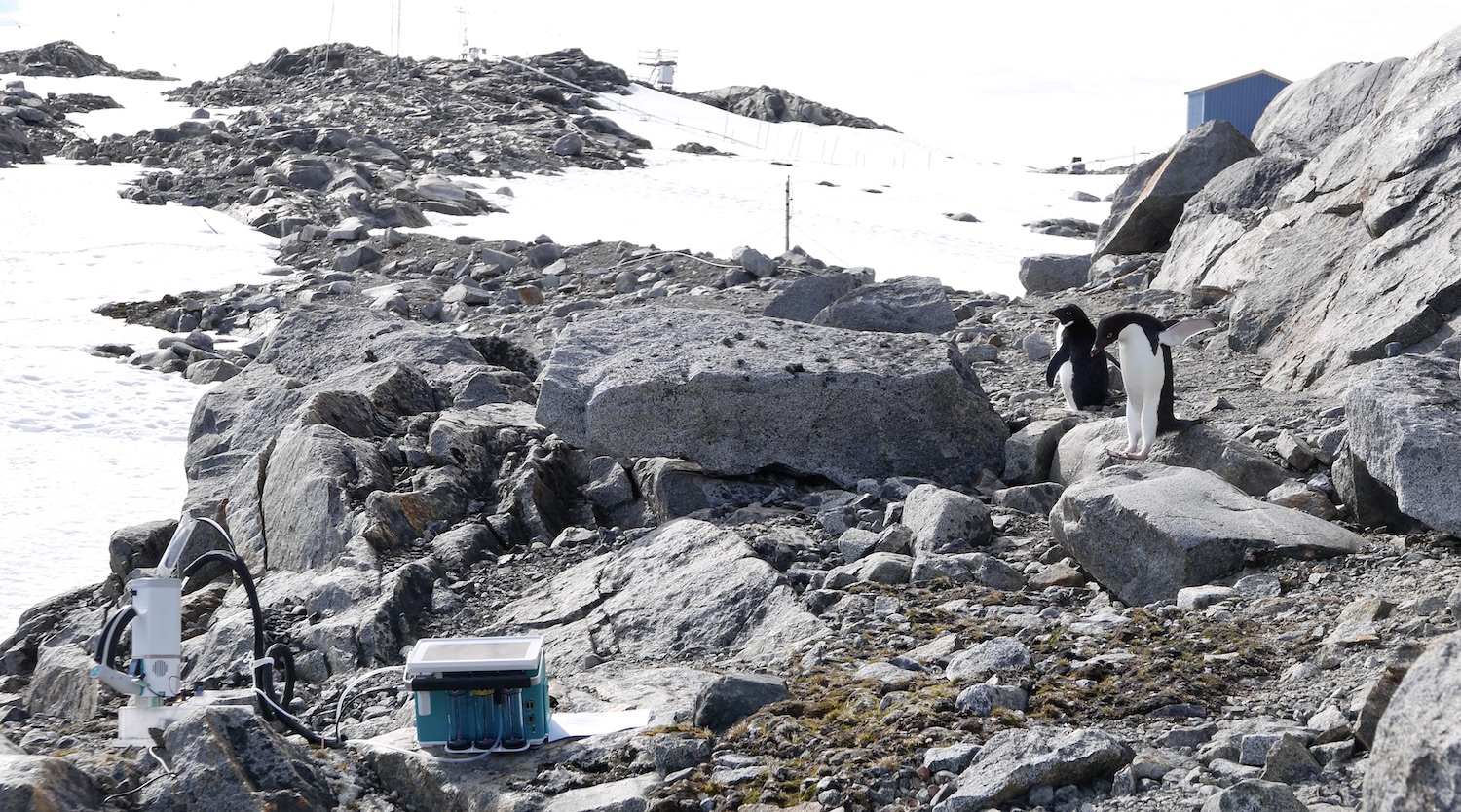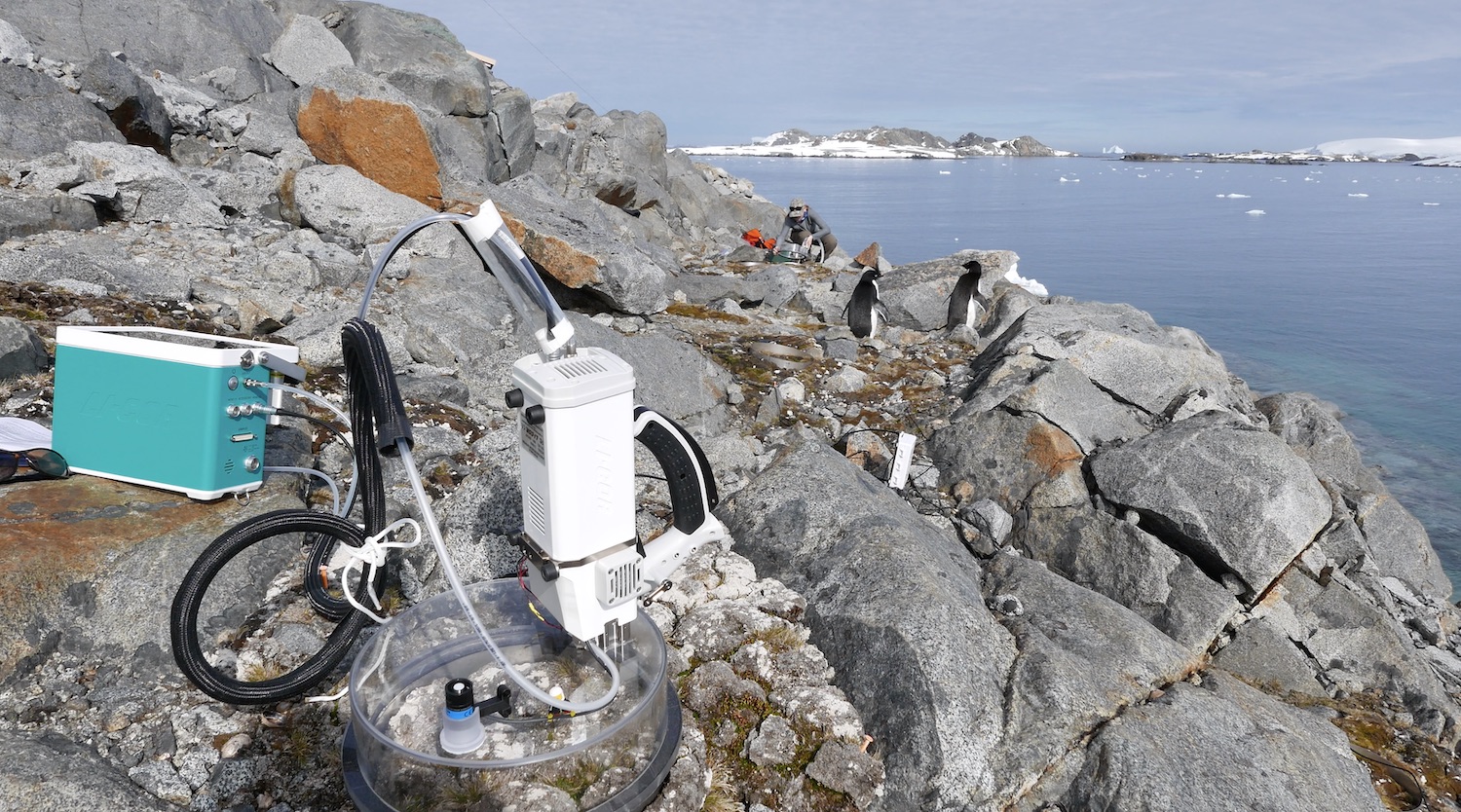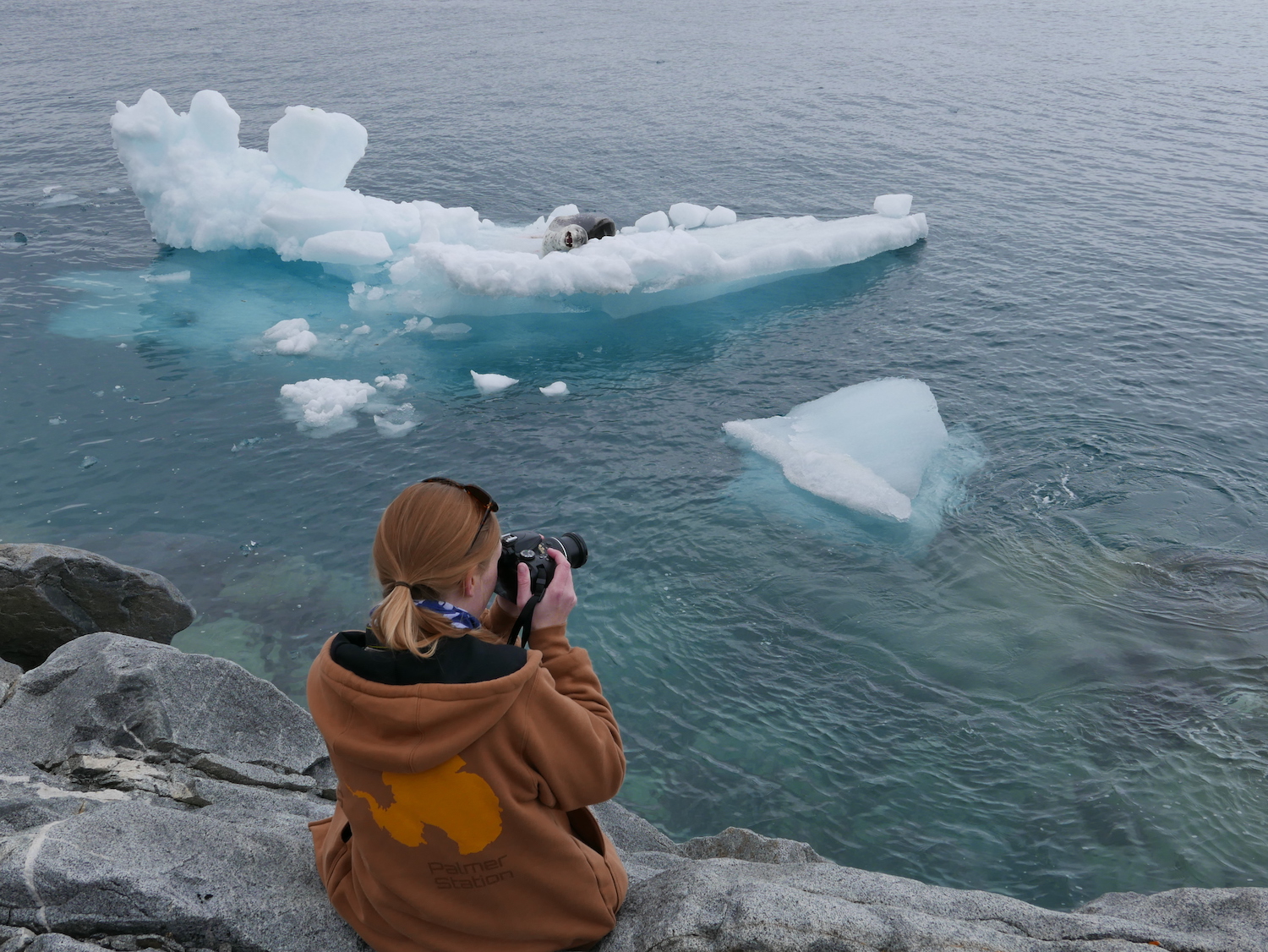Pre-treatment measurements:
Today we made our very first set of carbon flux measurements. We placed a clear chamber onto the stainless steel collars that we had inserted into soil last week. This provides for a great seal - we do not want any air leaks! Because the chambers are clear we have two concurrent processes: we have carbon going into the ecosystem through photosynthesis by the plants enclosed within that chamber (the chamber is clear, so plants receive light for photosynthesis), but there is also respiration (microbes and plants respire CO2, just like we do). Our devices measure the change in CO2 concentrations within the chamber for a short period. Does the CO2 increase (meaning there is more CO2 being respired than is taken up through photosynthesis, thereby increasing CO2 concentrations)? Or, does the CO2 decrease (i.e., are plants removing more CO2 from the air than is released through respiration?).
Thanks, Doc (Dr. Rich Harper), for the great photo of Kelly and I measuring CO2 fluxes with the LI-6800.

One major question in my research is how warming affects the net carbon balance. So… will warming have a greater effect on plant photosynthesis (i.e. carbon gain) or on respiration (i.e, carbon loss)?
We need to take these measurements before we start the warming treatment with the cone-shaped chambers I showed on day 14. Getting pre-treatment data is good practice in science - how would you know if a treatment worked unless you have some pre-treatment information?
My study is important, because what if warming increases net carbon loss from the ecosystem? That means faster increases in CO2 in the atmosphere and thus accelerated warming rates.
Apparently two Adélie penguins, who belong to the species of penguins whose populations have plummeted in the Palmer area because of the rapid warming rates in the region, are curious about my research question also! A self-reinforcing cycle between atmospheric warming rates and carbon could affect them further!

They actually stayed a while with us, watching us closely. We had to work under their scrutiny, so we made sure we did excellent work!

A leopard seal floating on an ice floe seemed to care a little less about our project as it dozed for hours (seriously, hours!!!). This of course, gave great photo opportunities while watching safely from our field site.
What a great way to end the day!!! HAPPY NEW YEAR EVERYONE!
